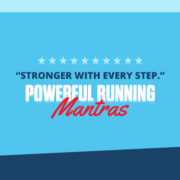Easy Ways You Can Transition From Walking to Running
Taking the next step: how to transition from walking to running
If you’re a casual walker looking to intensify your exercise, you should give running a try. It can burn more calories, strengthen your heart, and lower your cholesterol levels. Running can also reduce stress levels and lead to developing a healthier lifestyle. Most importantly, running nourishes your mind and soul by helping you clear your head and find peace within yourself. But how do you even begin to transition from walking to running? Our advice below will get you on the right path, the path to completing your first half marathon! This is a journey that will take time. Just remember, you’re not alone on your journey! We’re here to help you transition from walking to running. Here’s an excellent playlist for your journey!
Running gear
Your transition from walking to running may not be as difficult as you think. Make sure you have a pair of comfortable running shoes. You can extend the life of your running shoes (and save money) by only running in them. Proper fitting running shoes can also help prevent painful shin splints. Here are 7 more tips to avoid shin splints and keep your transition from walking to running on track! Wear workout gear that allows you to move freely, is lightweight, and wicks sweat. Keep a water bottle nearby to stay hydrated and replenish lost fluids. We’re fans of nuun hydration and their tablets. It’s easy to carry and help replace lost electrolytes.
Begin your journey from walking to running
Let’s assume you walk four or five days every week and want to begin running. That’s a great start! Even if you don’t walk that much, the steps below will help you during your transition from walking to running. Pro tip: you can always take breaks in between if you are out of breath or feel exhausted.
Weeks 1-3
Develop an exercise schedule if you don’t currently have one. The goal is to become more comfortable being on your feet for extended periods of time.
- First week – walk 30 minutes/day for four days
- Second week – walk 40 minutes/day for four days
- Third week – walk 50 minutes/day for four days
Weeks 4-6
Now it’s time to crank it up a bit! But don’t get too excited just yet. You want to slowly incorporate jogging into your schedule.
- Fourth week – 10-minute warm-up walk, alternate 30-second light jog/4-minute walk for 15 minutes, 5-minute cool down walk
- Fifth week – 10-minute warm-up walk, alternate 1-minute light jog/4-minute walk for 20 minutes, 5-minute cool down walk
- Sixth week – 10-minute warm-up walk, alternate 2-minute light jog/3-minute walk for 25 minutes, 5-minute cool down walk
Week 7
When you feel comfortable with this routine, increase your jogging intervals and decrease your walking intervals as you see fit. Set a goal for yourself before you begin. Feel free to pick up the pace during your jog if it feels good. If you feel overwhelmed or exhausted, cut back the time.
- Seventh week – 5-minute warm-up walk, alternate 3-minute jog/2-minute walk for 25 minutes, 5-minute cool down walk
Week 8
If you continue to feel comfortable, extend the duration of your intervals as you see fit. Alternate your jog and walking like previous routines. Continue to set small goals to reach. Feel free to pick up the pace during your jog if it feels good. If you feel overwhelmed or exhausted, cut back the time.
- Eighth week – 5-minute warm-up walk, alternate 5-minute jog/1-minute walk for 30 minutes, 5-minute cool down walk
You did it!
By now, jogging for longer periods of time should become more and more comfortable. Congratulations, you’ve made the transition from walking to running! Continue to extend your jogging time. Maybe even quicken your stride and break into slow runs. You’ll eventually eliminate the walking portion of your intervals. When you feel comfortable running for 30-40 minutes, it’s time to sign up for your first half marathon! Do you have advice for someone who wants to graduate from walking to running? Let us know in the 3M Half Marathon Facebook Group or on Twitter.









